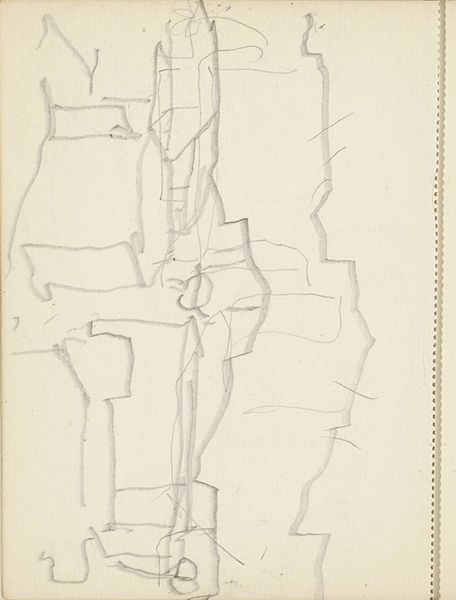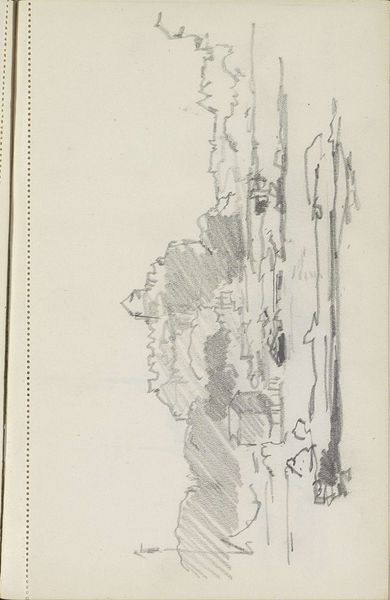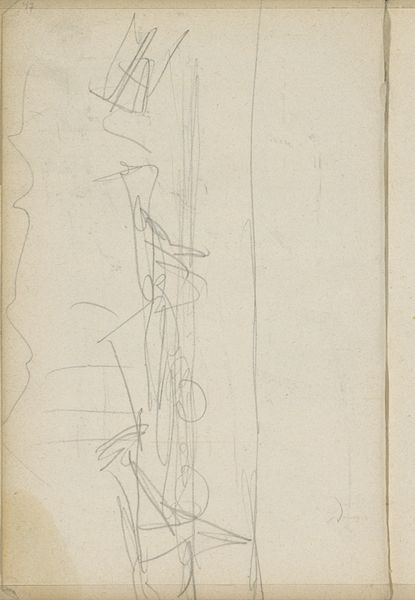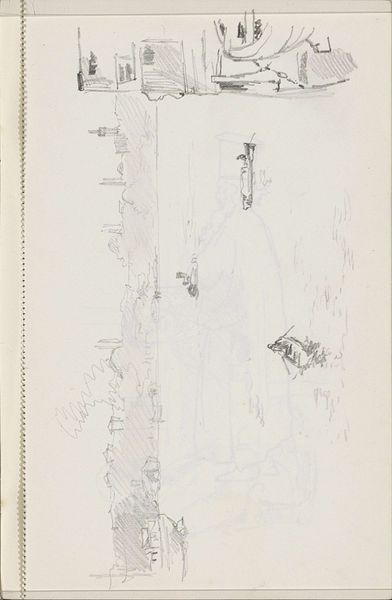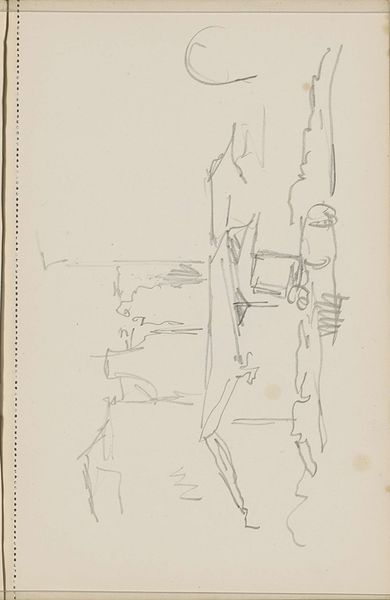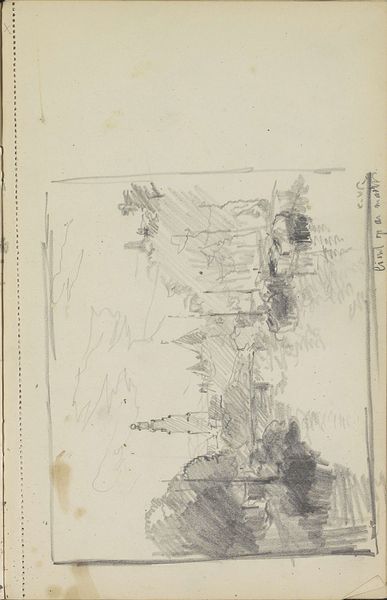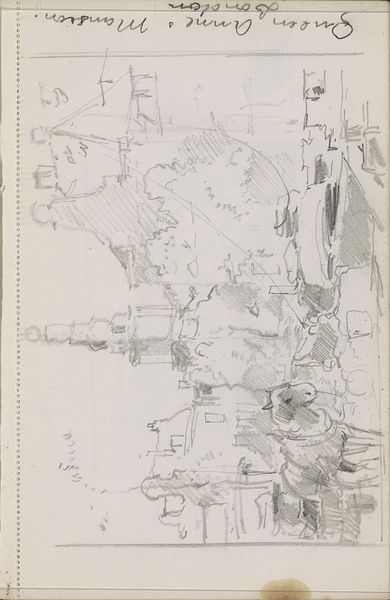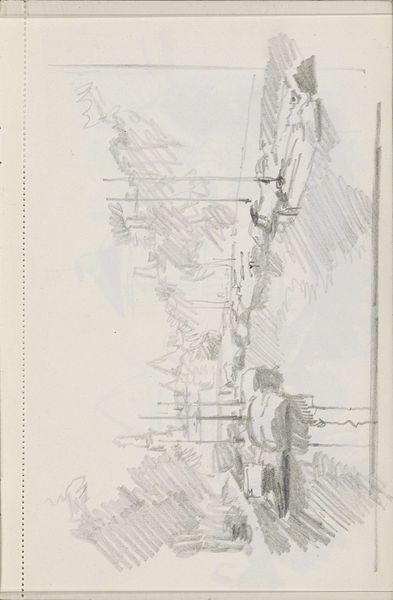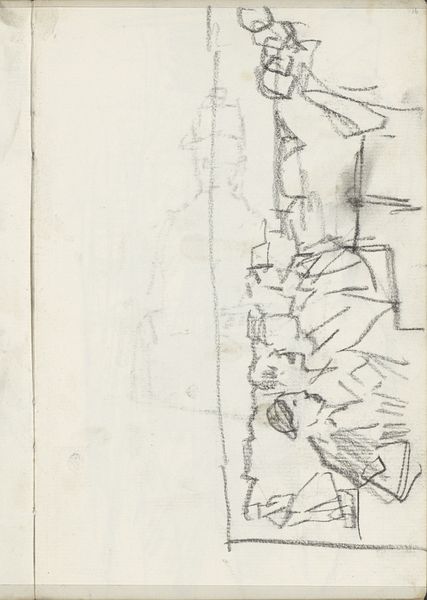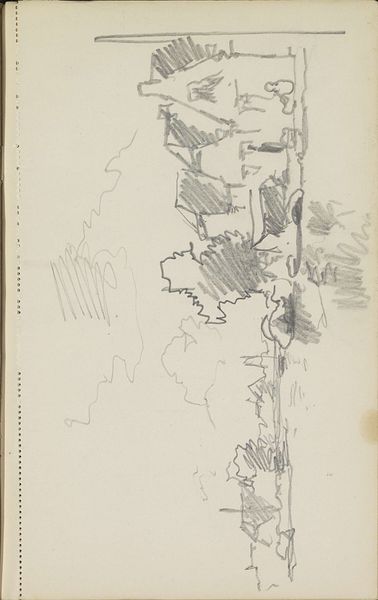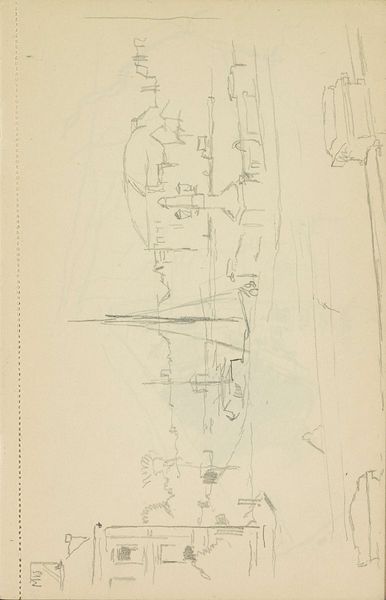
drawing, pencil
#
drawing
#
imaginative character sketch
#
light pencil work
#
pen sketch
#
landscape
#
personal sketchbook
#
idea generation sketch
#
ink drawing experimentation
#
geometric
#
pen-ink sketch
#
mountain
#
pencil
#
sketchbook drawing
#
sketchbook art
#
initial sketch
Copyright: Rijks Museum: Open Domain
Editor: This is "Village at the Foot of a Mountain" by Reijer Stolk, dating from sometime between 1916 and 1945. It's a delicate pencil drawing, and the composition feels almost dreamlike. How do you interpret this work? Curator: This drawing, though seemingly simple, pulses with potential cultural meaning. What strikes me first is the almost architectural rendering of the mountain itself. Notice how it’s built of geometric forms, resembling the very village nestled below. Could the artist be suggesting an interconnectedness, a symbiosis even, between humanity and nature? What feeling does this evoke for you? Editor: It does give the impression of being connected - of belonging together! There's something very gentle and organic about the shapes. Curator: Precisely. Stolk offers a subtle commentary on the human place within the grand narrative of nature. The village, rendered in soft lines, seems protected, embraced even, by the more rigid and angular form of the mountain. It speaks to an age-old artistic exploration of shelter and community. Have you come across these visual metaphors before? Editor: Thinking about it, yes, I recognize the feeling from earlier landscape paintings depicting people humbly living in valleys. Curator: There you have it. Consider also that drawings often operate as symbolic language, revealing inner dialogues. Do you believe Stolk is sketching something he saw, or expressing an idea? Perhaps one about humanity and nature, about safety, resilience, and co-existence? Editor: This makes me look at the drawing differently. It’s not just a sketch; it is so charged with imagery. Curator: Indeed. What seems simple on the surface has deeper significance, enriching our understanding of cultural memory transmitted through visual symbols.
Comments
No comments
Be the first to comment and join the conversation on the ultimate creative platform.
